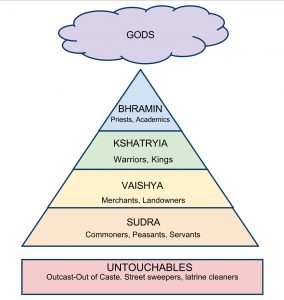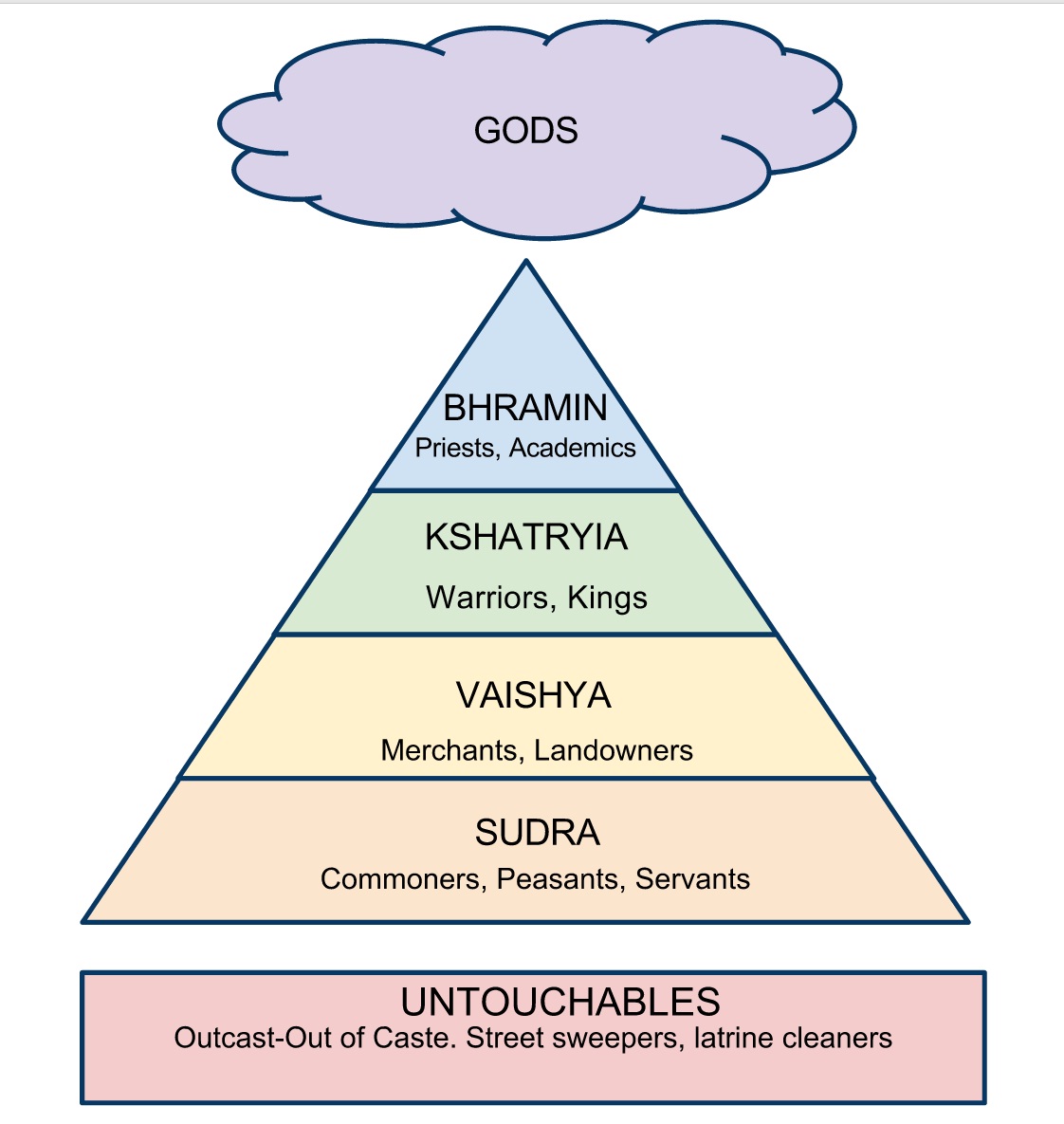
Over the past two weeks I have met some incredible people and seen some incredible things. But as was noted in my first blog post, it is difficult not to feel frustrated by the inequality and hierarchal structure deeply ingrained in Indian culture. Part of the frustration is that there is no obvious blame or easy solution to it – it is more a consequence of being so populated. Within such a vast population people are divided into groups, and more often than not it is difficult for these groups to be equal to one and other, despite what a law might say. For this blog post I shall take a look into what divides people in India and which groups are at the top and bottom of the pile.
The first divider is race. Or maybe I have that wrong. Maybe I should be calling it the caste system: the Brahmins (the Priests) at the top, the Khsatriyas (Warriors) second placed in the pyramid, the Vaishyas (Merchants and landowners) third, the Shudras (Servants) fourth, and the Untouchables (out of caste – the cobblers, street sweepers etc) at the bottom. The reason I talk about this caste system with regards to race is because the rank of each of these social groups appears to coincide incredibly consistently with race – the Brahmins tend to be the lightest skinned and the Untouchables the darkest.
To an extent it might be argued that in the UK race plays a role in social class as well. Often there is talk of ethnic minorities not being given the same opportunities as the white majority, but in the UK less groupings are made on the basis of race. In bland and simple but true terms, you are either Black African, Brown Muslim, or White anywhere else. In India it often does seem as if the lighter your skin, the better off you are, and the darker your skin, the worse off. For example the street beggars who have come up to me have almost always been very dark-skinned, and all the models on the billboards are incredibly light-skinned. A sign of optimism though is that in the last ten years there have been more marriages between the different castes, and so hopefully if I ever return to India in the future the racism will be less of a frustration.
Another divider is language. There are 22 official languages in India, and more if you take into account the languages spoken by the indigenous people. Now compare this with England where really there is just one language, and imagine if each county in England spoke a different language and how much this would divide the nation. With 40% of Indians speaking it Hindi is by far the most spoken, but the issue and the frustration with regards to language lies more in the struggle in causes for educating people. Obviously if you have grown up learning a language that is not spoken broadly you are in a worse position than someone who speaks a more universally spoken language. Interestingly the Brahmins also appear to be the better educated, and tend to speak the best English.
Another big inequality that frustrates me is gender. The other day I saw four small women lifting and laying the heavy tiles by the side of the road whilst four men stood instructing. You would not see this in England. There are enough ways I can criticize us but we are generally an over-polite bunch when it comes to it. If a man sees a women struggling and doesn’t help they are seen as rude. Women in India seem a lot less confident than women in the UK, except of course within Symbiosis as I’ve expressed already a previous post. The fact that the girls I haveve met at Symbiosis are so quirky and confident though does make me feel positive about the gender gap declining in the future.
On the whole I do feel as if the inequalities that have frustrated me on this trip are declining. It is important to remember than India is a lot younger than the UK, and so in considering what frustrates me about the country it is worth considering also what the UK was like 50-100 years ago – it was a lot more unequal than it is now! India is growing fast and I just hope that the students and culture here at Symbiosis spread across the country.
